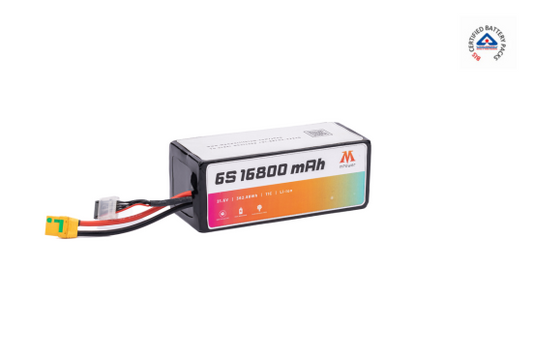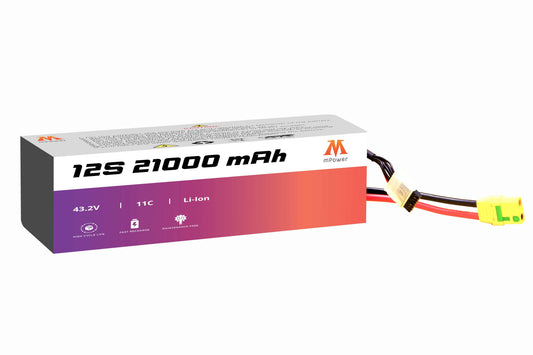
The drone industry is in the midst of a transformative era, with Beyond Visual Line of Sight (BVLOS) missions fast becoming the new frontier. From precision agriculture and infrastructure inspections to search and rescue operations and logistics, BVLOS capabilities are expanding the operational scope of unmanned aerial vehicles (UAVs). But for these missions to be safe, reliable, and effective, one critical factor must keep pace—battery innovation.
Battery technology plays a pivotal role in how far, how long, and how efficiently drones can fly. Traditional short-range applications allowed drone operators to keep drones within their field of view. But BVLOS missions, which often involve covering long distances in remote or difficult-to-access areas, demand more power, more reliability, and smarter energy management. This is where advanced drone rechargeable batteries and cutting-edge innovation come in.
Why BVLOS Missions Demand Better Batteries
BVLOS operations extend drone range beyond what the human eye can see, enabling advanced use cases like package delivery across cities, remote pipeline surveillance, or large-scale disaster monitoring. These missions often require continuous operation for 30 minutes to several hours, depending on the drone’s size and payload. For this, a standard battery for drone is simply not enough.
BVLOS drones also need backup systems, smart telemetry, and secure communication—each of which consumes additional power. In emergency services or medical deliveries, any disruption in energy supply can have critical consequences. Thus, battery performance isn’t just about flight time anymore; it’s about mission success and operational safety.
The Evolution of Drone Battery Technology
Drone batteries have evolved significantly in the past decade, with lithium-ion and lithium-polymer chemistries being at the forefront. But recent innovations are pushing the boundaries even further.
High Energy Density Materials: Modern drone rechargeable batteries now offer greater energy storage without a proportional increase in weight. This allows for longer flights and heavier payloads—ideal for BVLOS operations involving cameras, sensors, or delivery cargo.
Faster Charging: Quick recharge capabilities reduce downtime between missions. Innovations like multi-port fast-charging hubs or battery swap systems make it easier for drones to return to service without delay.
Battery Monitoring Systems (BMoS): Intelligent BMS platforms are becoming standard in high-end drone batteries. These systems monitor battery health, predict failures, optimize power usage, and even alert operators in real-time—critical features for BVLOS where manual intervention isn’t possible mid-flight. mPower has it’s own inhouse built Smart Battery that surpasses the Intelligent BMS in market.
Thermal Management: BVLOS missions expose drones to varied and often extreme environmental conditions. Advances in battery casing, insulation, and active thermal regulation now help maintain consistent performance in hot, cold, or fluctuating climates.
mPower Batteries: Powering the Next-Gen Drone Missions
At mPower Batteries, we understand that the success of BVLOS operations hinges on battery reliability and intelligence. Our next-generation battery for drone solutions are engineered not just for endurance but for adaptability across diverse mission profiles.
Our lithium-based battery modules are equipped with smart sensors, high-discharge performance, and built-in safety systems—making them ideal for commercial and industrial drone operators preparing for BVLOS certification and scaling.
Whether you’re managing autonomous delivery fleets or surveying dense infrastructure networks, mPower ensures your energy system doesn’t just support your mission but enhances it.
The Road Ahead: Battery Innovation as an Enabler
As regulatory frameworks across countries evolve to support more BVLOS missions, the pressure on battery performance will only increase. With the potential introduction of hydrogen fuel cells, solid-state batteries, and AI-powered energy prediction systems, we are only beginning to see what’s possible.
Looking forward, drone battery innovation will also influence fleet maintenance, predictive diagnostics, and environmental sustainability. With drone operators prioritizing lighter carbon footprints and circular battery usage, manufacturers are also working on batteries with improved recyclability and lower production emissions.
Conclusion
BVLOS is poised to redefine how we perceive drone capabilities—from line-of-sight gadgets to fully autonomous aerial systems that extend human reach. But for this future to become reality, the core energy source must evolve.
Advanced drone rechargeable batteries and smart energy systems are no longer optional—they’re mission-critical. And at mPower Batteries, we’re proud to be at the center of this energy revolution, delivering performance that goes the distance—literally and figuratively.
Ready to power your BVLOS journey? Explore our full line of intelligent drone battery solutions today.












